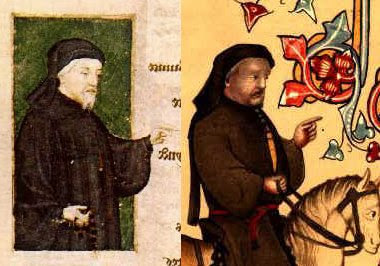
Video game magazine writing is a cushy job that I desperately desire. You get to spend your time writing sentences like this one I came across in last month’s issue of Game Informer:
The game begins as Dante returns from years of war to finally marry his fiance Beatrice, only to find her murdered (one of the many understandable departures from the source material).
The game in question is Electronic Arts’ upcoming Dante’s Inferno, due out next year. If I had been writing the article, though, it probably would have read more like this:
The game begins as Dante returns from years of war to finally marry his fiance Beatrice, only to find her murdered (in one of many instances where the game designers understandably got confused and thought they were supposed to be making a game version of Ridley Scott’s 2000 film Gladiator).
But, hey, writers are allowed their own idiosyncrasies.* The previewer continues:
As Lucifer drags her soul to hell, Dante jumps in after them to begin his journey. Before entering the first ring of hell, Dante learns the ropes in a battle with Death in which he ends up stealing the Grim Reaper’s scythe.
That sentence, too, needs a parenthetical ‘(one of the many understandable departures from the source material)’–as does every other in the article–but I guess the previewer had a word limit. Personally, I don’t understand why they didn’t just choose another protagonist. They could still call it Dante’s Inferno without actually including Dante, since it’s clearly set in a punchier and slicier version of Dante’s hell. Just have the player control Shmante, Dante’s younger, more attractive cousin and leave it at that.
Actually, come to think of it a bit more, Dante is the perfect protagonist for a combo-driven beat’em up game. Just take everything he wrote super literally. Like this bit from La Vita Nuova:
There appeared to be in my room a mist of the colour of fire, within the which I discerned the figure of a Lord of terrible aspect to such as should gaze upon him […] Speaking he said many things, among the which I could understand but few; and of these, this: “I am thy Lord”. In his arms it seemed to me that a person was sleeping, covered only with a crimson cloth; upon whom looking very attentively […] And he who held her held also in his hand a thing that was burning in flames, and he said to me “Behold thy heart”. But when he had remained with me a little while, I thought that he set himself to awaken her that slept; after the which he made her to eat that thing which flamed in his hand; and she ate as one fearing.
And that’s from his autobiography, even. Magical demons appearing in puffs of red smoke, redolent chicks eating burning hearts–Kratos ain’t got nothing on that.
—
*Mine, for instance, involve forcing readers to repeatedly come down to the post’s lower margin.**
**Often to no purpose!***
***But you knew that already.





















Recent Comments